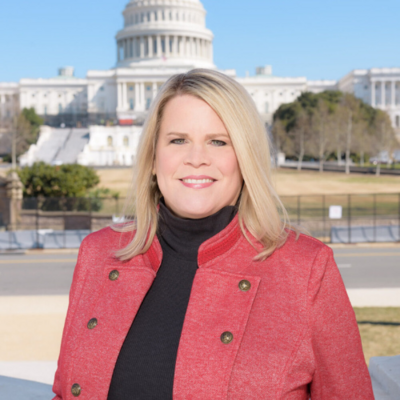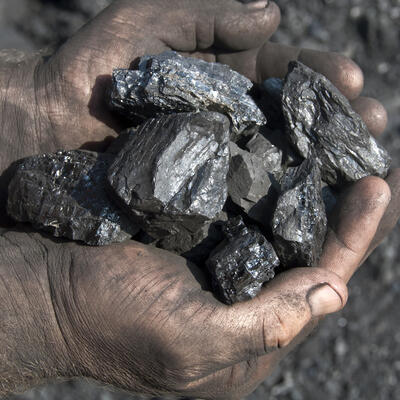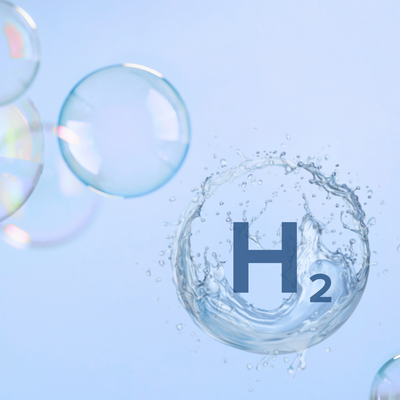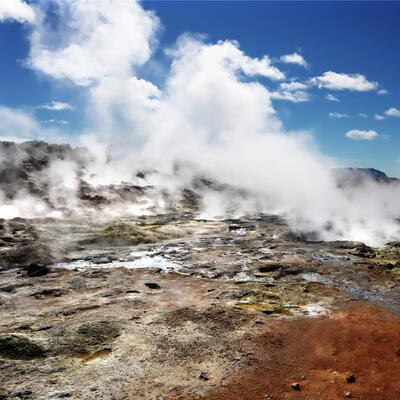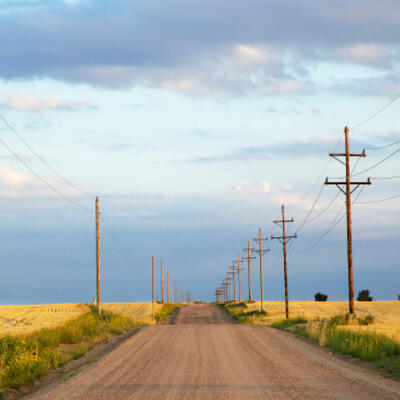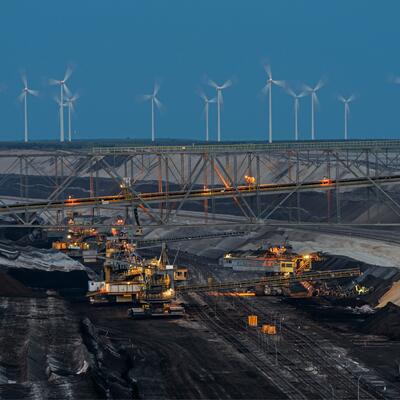
Let’s Talk Dirty to Clean Energy
Guests
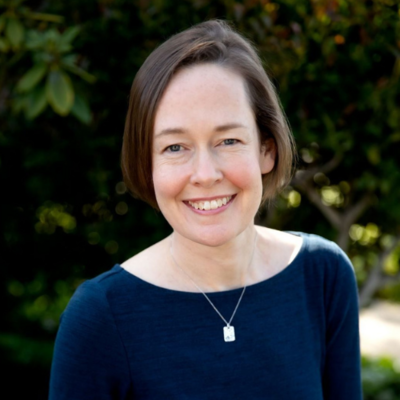
Mary Anne Hitt
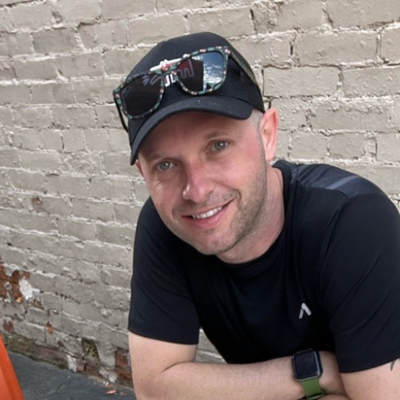
Thomas Ramey
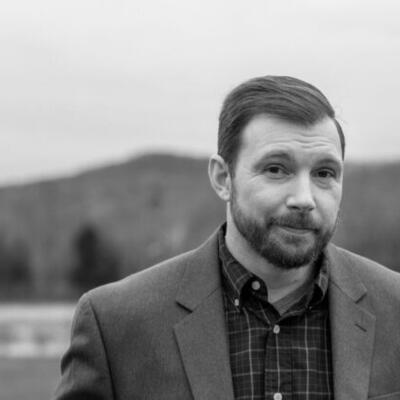
Nick Mullins
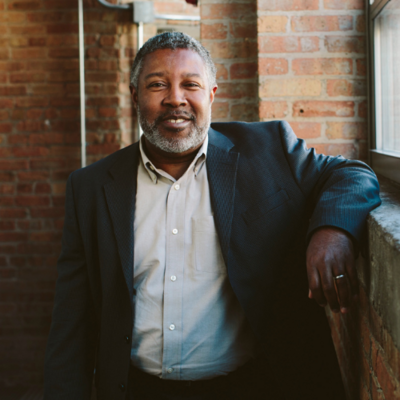
Delmar Gillus
Summary
After more than a century, the U.S. is moving away from coal, the dirtiest and most dangerous form of power generation.
“We are now at a point where we are getting less than 20 percent of our electricity from coal in the United States. A decade ago, coal was providing half of our electricity,” says Mary Anne Hitt, Senior Director of Climate Imperative, a foundation that provides expertise, funding and support on climate policy. She spent a decade as director of the Sierra Club’s Beyond Coal Campaign, working to retire existing coal plants and block new ones. She says today in the U.S., coal is simply not economical.
“It is now cheaper just about everywhere in this country to build new wind, solar and storage than it is to run an existing coal plant.”
More than 23 states have 100% clean energy goals, and in order to reach those goals, some states are starting to convert what was once considered “dirty” into “clean” energy generation. As fossil fuels are phased out, shuttered coal plants, contaminated landfills, and abandoned mine lands across the U.S. are finding new life as renewable energy projects.
Just one example is in Wise County, Virginia, where a new solar array is being built on a former coal mine to power a nearby data center. There are many more coal-to-solar examples across the country. Even hazardous waste sites, known as Superfund sites, are getting new lives as solar farms.
Using old fossil fuel sites can have advantages over finding new places to build, like the fact that they’re already connected to the grid. The new clean power economy can also employ some of those who used to work in the fossil fuel industry.
Thomas Ramey’s family has worked in coal for generations. But he chose a different path, becoming a commercial home evaluator for renewable energy company Solar Holler, a company that has prioritized hiring out-of-work coal miners. He says it’s taken a while for his community to accept this new form of power generation, but it is happening.
“Slowly over the years, the area has embraced the idea that West Virginia, and this region, has always been a leader when it comes to energy across the nation. And this is just another way for us to look at that,” Ramey says.
New money and programs from the Inflation Reduction Act are helping some of this change take place, like providing tax breaks to companies that build clean energy in communities that have historically been economically reliant on coal, oil or gas. As this transition happens, there’s a push to make sure the changes benefit everyone, particularly those who have to change jobs or careers.
“It's one thing to pivot from fossil fuels to clean energy, but it's another thing to do it in a humane way where we're bringing everyone in the state along while continuing to create economic opportunities,” says Delmar Gillus, chief operating officer of clean energy consulting firm Elevate. In 2021 he was involved in getting the Climate and Equitable Jobs Act passed in Illinois.
“In my role as an in-room negotiator, one of the things I focused on were the equity and job components, as well as the just transition from coal to solar, from fossil fuels to renewables. And so a lot of where I focused my energy was really on making sure that everyone across the state had full access to the benefits of the clean energy economy, whether that was the educational tools, whether that was the job creation aspects, whether it was the grant funding for contractors,” he says.
Mary Anne Hitt of Climate Imperative lives in West Virginia, and says it’s been remarkable to see how many clean energy companies are popping up all over the state.
“The Sparks battery plant, for example, that's been unionized by the United Mine Workers, is an incredible example, an incredible story. We've also got electric school bus factories,” she says. “So it really does feel like a new day here in West Virginia. And I expect the same is true in coal mining states all over the country.”
This episode also features a reported piece by Jordan Gass-Pooré from the "Hazard NJ" podcast, an investigative podcast and multimedia project from NJ Spotlight News.
Episode Highlights
03:10 – Mary Anne Hitt on why the U.S. is moving away from coal
05:45 – Programs in the Inflation Reduction Act to help fossil fuel communities and workers transition
07:30 – Clean energy projects and companies coming to West Virginia
09:00 – Coal-to-solar conversion at Reid Gardner plant in Nevada
13:00 – Why old fossil fuel plants are good to repurpose for renewable energy
16:00 – Consumers are paying higher electric bills to keep old coal plants running
20:30 – Nick Mullins on his changing views on coal mining
26:00 – Thomas Ramey on his upbringing in a coal community and work with solar
30:00 – Changing views on solar energy in coal field communities
37:30 – Jordan Gass-Pooré on Superfund solar project at New Jersey’s Price Landfill
43:00 – Delmar Gillus on negotiating the Illinois Climate and Equitable Jobs Act
47:00 – New jobs created in renewable energy space
50:00 – Ways to help retrain workers
53:00 – Role of unions in new clean energy jobs
57:30 – “You need an equitable process to get equitable outcomes.”
Resources From This Episode (5)
Full Transcript
Note: Transcripts are generated using a combination of automated software and human transcribers and may contain errors. Please check the actual audio before quoting it.
Greg Dalton: This is Climate One. After more than a century, the U.S. is moving away from coal, the dirtiest form of power generation:
Mary Anne Hitt: 2024 is looking like it will be a turning point when we get more electricity from wind and solar than we do from coal.
Greg Dalton: Across the nation, coal-fired power plants, mines and hazardous waste sites are being turned into solar farms and renewable energy hubs.
Jackie Kondrk: We want to use these sites that would otherwise not be used likely at all.
Greg Dalton: And as this transition happens, there’s a push to make sure the changes benefit everyone.
Delmar Gillus: It's one thing to pivot from fossil fuels to clean energy, but it's another thing to do it in a humane way where we're bringing everyone in the state along while continuing to create the economic opportunities.
Greg Dalton: Moving from Dirty to Clean Energy, Up next on Climate One.
This is Climate One, I’m Greg Dalton.
Ariana Brocious: And I’m Ariana Brocious. We talk a lot about the “energy transition” – meaning moving away from burning fossil fuels that are warming the planet as well as hurting our health and the environment. And replacing that energy with renewable sources. It’s a big, broad undertaking, and the projects tackling it are big too.
Greg Dalton: Right. And this big move leaves behind shuttered coal plants, contaminated landfills, and abandoned mines. But across the US, these sites are finding new life in renewable energy projects. One of those is in Wise County, Virginia, where a new solar array is being built on a former coal mine. The power generated from the array will support a nearby data center.
Ariana Brocious: And that’s actually not the only coal-to-solar project in that Virginia county. There’s five more in the works right now.
Greg Dalton: Wow. This is happening. I know these sites are usually already remediated – meaning mostly cleaned up and the land replanted, etc., but those can be passive or less-bad uses of land. It’s cool to see them being turned into something so positive and active, and generative.
Ariana Brocious: Yeah. It’s a literal, physical manifestation of this “transition” we so often talk about. I mean, we are taking places that used to extract or burn coal and using them to make power from the sun. And old fossil fuel plants can have advantages over finding new places to build – like the fact that they’re already connected to the grid.
Greg Dalton: And there's a big push for this dirty-to-clean power generation, because more than 23 states have 100% clean energy goals. So they need more renewable power on the grid. This is the market working.
Ariana Brocious: But like many things, while this sounds clear in theory, it can be more complicated on the ground. Today we’re talking about what happens to infrastructure, workers, and communities in the wake of this transition.
Greg Dalton: Later in the hour we’ll hear directly from members of coal mining communities about the industry and what it means to change to something new. Some of them are going into solar. And they call themselves sun miners.
Ariana Brocious: And because billions of dollars flow into these projects through policies like the Inflation Reduction Act, we want to know what’s being done to ensure that the same communities who have historically been left behind are included this time around.
Ariana Brocious: Someone who knows a lot about this transition is Mary Annee Hitt, Senior Director of Climate Imperative, a foundation that provides expertise, funding and support on climate policy. Before that, she spent a decade as director of the Sierra Club’s Beyond Coal Campaign, working to retire existing coal plants and block new ones. She says all that work is starting to pay off.
Mary Anne Hitt: We are now at a point where we are getting less than 20 percent of our electricity from coal in the United States. A decade ago, coal was providing half of our electricity. So it's down below 20%. Two thirds of the coal fired power plants in the United States are retired, or slated to retire this decade and 2024 is looking like it will be a turning point when we get more electricity from wind and solar than we do from coal consistently for the year 2024, for the first time ever.
Ariana Brocious: Wow. So what's driven that change?
Mary Anne Hitt: So there have been three big drivers of this move away from coal to clean energy. The first has been grassroots leadership on the ground, people working hard to replace coal plants with clean energy. The second has been stronger pollution standards. For a long time, coal plants were allowed to release all of their mercury pollution and coal ash and lots of other dangerous pollution without very strong standards. And those have been strengthened. So coal plants are having to deal with their pollution. And last but certainly not least has been economics. It is now cheaper just about everywhere in this country to build new wind, solar and storage than it is to run an existing coal plant. So coal just can no longer compete with clean energy.
Ariana Brocious: So we're seeing this shift as we've said away from coal to other sources of energy, especially renewables. Let's talk a bit about what it means for those communities where this has been, in many cases, the primary economic driver. So there's a difference between what can happen for a community where coal is mined versus one where it's burned at a power plant. Can you help me walk through the differences there and the sort of reemployment prospects for those different workers?
Mary Anne Hitt: Absolutely. In the case of coal fired power plants, obviously a coal plant retiring is a big challenge for a community because folks work in those plants, and they also contribute a lot to the tax base. At the same time, often those coal plants are operated by large utilities that have a very large operation, and so oftentimes the workers either can retire or can have other jobs within that utility’s business somewhere. So it is a challenge, but it is a challenge that if a utility is responsible, they can manage the retirement and manage the transition and make sure that they do right by the workers and the community. It is a bigger challenge in coal mining communities. If you think about the hundred-plus years we've been mining coal in the United States, these are resource extraction based economies. Here in Appalachia, where I live, we have a long history of company towns where coal companies literally built towns, paid the miners in money called script that was their own money that they could only spend in the company store. So these are their generations of folks who have worked in these communities without a diverse economy. And so diversifying the economy in coal mining communities is a bigger challenge. And at the same time, you know, we finally have new resources and tools to help do that, thanks to the Inflation Reduction Act.
Ariana Brocious: Tell us a bit about how that money and those resources are being used to help people in coal communities.
Mary Anne Hitt: A couple of the key programs to note. One is tax credits for energy communities. So if you were building a wind or solar or clean energy project, you get bigger tax breaks if you are building them in a community that has been historically reliant economically on coal or oil or gas. So that improves the prospects for building projects in those areas. And we are seeing clean energy projects pop up all over Appalachia and other fossil fuel regions for that reason. Second, there are loan programs at the department of energy, which again are, you know, in places where they can help support coal communities are available. And then last but not least, the U.S. department of agriculture has a large program for rural electric co-ops, which still own a lot of the remaining coal plants in the United States that don't yet have retirement dates. And they have an almost 10 billion program for those co-ops to submit proposals to build clean energy in their districts. And that can also be used to retire the coal plants and replace them with clean energy in those areas. So there are a lot of programs that are specifically targeted to coal communities, coal mining areas and states and communities are taking advantage of those.
Ariana Brocious: So, one example: Sparks is a battery manufacturing startup and they made a labor agreement with the United Mine Workers of America to prioritize displaced miners for jobs at their upcoming West Virginia battery plant. How are you seeing that particular project play out?
Mary Anne Hitt: I live in West Virginia and it has been remarkable over the past year to see how many clean energy companies are popping up all over the state. The Sparks battery plant, for example, that's been unionized by the United Mine Workers is an incredible example, an incredible story. We've also got electric school bus factories. We have a lot of companies that are taking a look at West Virginia for the first time and that's combined with some groundwork that was laid by organizations and companies in the state like Coalfield Development Corporation, which has been training workers in the anticipation and hopes of these kinds of jobs coming to our state. And Solar Holler, which is a solar company that is a unionized solar company that is hiring folks from the coal fields. And I think is also poised to hit the ground running with all this new interest in the state. And so even the governor of West Virginia was just bragging about all of these new economic opportunities in his State of the State at the beginning of this year. So it really does feel like a new day here in West Virginia. And I expect the same is true in coal mining states all over the country.
Ariana Brocious: Coal mining and coal fired power plants are often located in communities that have less resources and they also bear a lot of the brunt of local pollution and health impacts.Can you tell me about the coal to solar conversion at Reid Gardner in Nevada and how that project alleviated the health impacts for an indigenous community?
Mary Anne Hitt: Yes, this is a project that we were part of when I was at the Sierra Club, the Moapa Band of Paiutes were living right next to the Reed Gardner coal plant, which was owned by NV Energy. And there was coal dust and coal ash, which is full of toxic heavy metals and other harmful particles, blowing over their community for years, they had a long record of health problems and health issues in the community. They had been calling for action for a very long time on that pollution. And so we joined up with them, not only to retire that Reid Gardner coal plant, but also help them get the first tribally owned solar project in the United States off of the ground. And that included a march at one point from the site of the coal plant to the place where the tribe planned to build this large solar project.
And that all took place over, in the 2010 to 2020 sort of decade. And now not only has the Reid Gardner plant closed, it stopped operating in 2017 and was demolished in 2020, but the Moapa have built not one, but two large solar projects on their lands, which are now providing economic revenue to the tribe. And that is one example of the kind of transition that's possible when we move away from this very polluting source of energy, that's also a huge threat to our climate and bring clean energy onto the ground in these communities.
A couple of other examples of places where this transition is happening: One is the Mount Tom coal plant in Massachusetts that is now home to a huge solar farm and a site for battery storage. The San Juan generating station is retired and now there's a slate of clean energy solutions that are being explored to replace that. In Colorado, the utility Tri-state, which operates a lot of coal plants has, I believe, submitted a big package to the Department of Agriculture for loans to speed up coal retirements and replace them with clean energy. So this is really happening all over the country. And I think again, as these IRA programs over the course of this year start to make announcements, we're going to see that drumbeat continue.
Ariana Brocious: So living in West Virginia, what have you seen or heard from people about just the challenge, maybe the difficulties of making that switch?
Mary Anne Hitt: It is a profound change. In many places in this country, here in West Virginia, coal has not only been a big part of our economy, but it's a big part of the cultural history. It's a big part of people's identity. There's a lot of patriotism around having mined the coal that built the planes that won World War Two. It's obviously interwoven into our politics. And so definitely do not want to understate just what a profound change this is. And it's one that is creating a lot of turmoil and tension in coal states and coal communities. And at the same time, coal is in decline. It's going to continue to decline both because it can't compete with clean energy and because it's what the climate and the public health imperative demand, that we move beyond coal. And so this is the time, I think, to be having those honest conversations in our states and communities about how do we make sure that we are part of the new clean energy economy? How do we make sure that, you know, having provided energy for this country for, for generations, how do we make sure that we continue to be part of providing the new generation of electricity and energy that this country needs? That's something that we can definitely do here in West Virginia and in other energy states. And make sure that we do so in a way that does not leave folks behind.
Ariana Brocious: Why might a former coal plant be an attractive location for a renewable energy project?
Mary Anne Hitt: One thing to remember about a coal plant is there are lots of power lines connected to that site, and that makes it an ideal place to locate clean energy. RMI actually just released this report on clean repowering, and here in the United States, we have a big problem with long waiting lines to get new clean energy on the grid. There's a huge amount of clean energy that's waiting three, four, five years to get on the grid. And this study from RMI found that there are 250 gigawatts, which is enough electricity to power 43 million homes, of potential clean energy that could be connected to the grid at these fossil fuel plant sites and could essentially skip that line. And so we would not only be bringing new economic opportunities to those communities, but we would also be getting more clean energy on the grid faster, which is essential for tackling the climate crisis.
Ariana Brocious: There's a huge backlog of getting new projects on the grid. So this is very exciting. So, the fate of coal power is often decided at the local and state levels. What have you observed about how these conversations are happening? Who's making these decisions?
Mary Anne Hitt: Having led the beyond coal campaign for a decade, I saw firsthand how pivotal local grassroots folks, local elected officials, could be in really tipping the scales to speed up retirement of coal and to replace that coal with clean energy. A third of the coal plants in the United States are still operating with no plans to retire this decade and I know advocates and local leaders are still working very hard on those remaining coal plants. Some of them still do not have modern scrubbers and so they are still contributing to heart attacks and strokes and asthma attacks and premature deaths, not to mention climate change. And if they are not taking a hard look at all these new incentives from The Inflation Reduction Act to build clean energy and retire coal, not only are they missing the boat, but they're not doing right by their customers because, coal again is more expensive than clean energy in most parts of the United States at this point. And so consumers are paying higher electric bills to keep these old coal plants running.
Ariana Brocious: Yeah, I think you said that is actually true in your case, right?
Mary Anne Hitt: Yes, I am in West Virginia. I am a First Energy customer. And here in West Virginia, we consistently have our electric bills raised because our two utilities here, First Energy and American Electric Power, are basically being required to keep running the coal plants by our state legislature, even though they are more expensive than clean energy that they could be buying instead. And so our electricity bills keep going up because we are being forced essentially to run these coal plants. And here in West Virginia, we are one of the poorest states in the country. That is something we can ill afford and those who have managed to break through and bring clean energy to the state like solar power are really helping out a lot in lowering the electric bills here for folks in West Virginia.
Ariana Brocious: Mary Anne Hitt is Senior Director of Climate Imperative. Thank you very much for joining us on Climate One.
Mary Anne Hitt: Thank you so much for having me.
Greg Dalton: Today on Climate One – transitioning from dirty to clean energy, and what that means for people and the land. If you missed a previous episode, or want to hear more of Climate One’s empowering conversations, subscribe to our podcast wherever you get your pods.
Please help us get people talking more about climate by giving us a rating or review. You can do it right now on your device. You can also help by sending a link to this episode to a friend.
Coming up, how does a community that was founded on coal embrace a whole new economy, and identity?
Thomas Ramey: Slowly over the years, the area has embraced the idea that West Virginia and this region has always been a leader when it comes to energy across the nation. And this is just another way for us to look at that.
Greg Dalton: That’s up next, when Climate One continues.
This is Climate One. I’m Greg Dalton.
Ariana Brocious: And I’m Ariana Brocious. When we talk about moving from dirty to clean energy, it’s worth taking just a moment to remind ourselves why this is necessary.
Greg Dalton: It’s not just the emissions caused by burning fossil fuels. Coal, in particular, is harmful on many levels. Mining on mountaintops destroys landscapes and ecosystems to get at the coal deposits. And even the mining we can’t see – underground – hurts the environment and human health. In northeastern Pennsylvania, there’s an underground coal deposit that’s been burning for decades – and most residents have had to abandon the town.
Ariana Brocious: And mining is dangerous. Workers suffer serious and often deadly health impacts of coal mining – like black lung disease, caused by inhalation of coal mine dust. Miners risk their lives and limbs every day. They work with huge equipment in tight spaces often underground. I used to live in a coal mining community in western Colorado, and I remember one local mine would have a drawing for a big prize like a new pickup truck after so many days without accidents – to incentivize safe practices. But even with strict safety protocols, accidents happen.
Greg Dalton: Then once coal is out of the ground it often has to be shipped long distances by train to get to coal plants. And when it’s burned, it releases coal ash and other harmful air pollutants like mercury into the air – that’s, of course, in addition to other climate-harming emissions like carbon dioxide.
And the human impacts are massive: A recent article in Science found that coal-fired power plants killed nearly half a million Americans in the last twenty years. And the Sierra Club estimates that coal-fired power plants still cause nearly four thousand premature deaths every year because of particulate pollution.
Ariana Brocious: And yet, even given this massive and undeniable environmental and public health threat… coal remains entrenched in many parts of the country. Many of the communities where coal is mined or burned have a long relationship with the industry, and a lot of pride in the power they’ve provided to the country. And it's important to recognize how much of our country's economy was historically built on coal and the miners who did the labor.
Greg Dalton: As an outsider I had a hard time understanding that pride. The first time I ever talked to a coal miner was 3 years ago… Nick Mullins is a former fifth-generation coal miner from Clintwood, Virginia - a small town of about 13-hundred people. Nick’s father was a coal miner too – and he taught his son to love the land around them.
Nick Mullins: He'd take me and my brother to the top of the ridge line, show us the trees. We would play in the streams. I really got really got connected to nature that way.
Greg Dalton: Nick’s family also hunted and fished there. He says as a kid, he had a lot of pride and respect for his forefathers who supported their family by working in the coal mines. But as he grew older, his views changed. When he was 19, a coal company opened a mine on the mountain above his family home.
Nick Mullins: It devastated me. I wasn't really up on any of the fight against mountaintop removal coal mining. I remember whenever they first started logging hiking up to the top of the ridge and seeing what was left of landscape. And they had just obliterated all the oaks and all the poplars and it didn't look like the same place. And then as the months continued, they started stripping away the top soils and it just became and as some people have said, like a moonscape. And they just chiseled away at the mountain. And it would never be the same again, only in memory.
Greg Dalton: It sounds like this is still upsetting for you even just to talk about those memories.
Nick Mullins: It is. You know, when people talk about a sense of place, I don't think people often think about how that place can be just utterly destroyed. And thinking about those kinds of things still bit of a raw emotion for me, knowing that me and my brother we’re the only ones or of course some other surviving family members are the only ones who are gonna be able to remember some of those places that no longer exist. And I won’t be able to show them to my children.
Greg Dalton: Coal miners are often portrayed as American heroes keeping the lights on fueling the Industrial Revolution. To what extent do you think coal miners see themselves that way as heroes?
Nick Mullins: They absolutely see themselves that way. I mean it's one of the things that kind of helps keep you going. Anytime that you’re having to face a difficult situation day in and day out and face such dangers as coal mining you certainly have to feel some pride in that what you're doing is good and worthwhile. It’s not unlike a veteran status to some degree. It’s that sense of sacrificing for you and your family and the nation at large.
Greg Dalton: You eventually became a miner yourself, why?
Nick Mullins: Well, it’s purely economical, you can really delve into a lot of history to contextualize the situation in Appalachia currently. But essentially the coal industry owns the majority of the region; they own the majority of the mineral rights under the ground. And so, there is a tremendous amount of power that they hold in terms of land ownership, economics and politics. So, the mono economy of coal that is in our region, it was created. So, there are really very, very few job alternatives in the region for anyone that wants to continue living there.
Greg Dalton: And you must've known you were taking personal health risks but how did you weigh the personal economic benefits and personal health risks?
Nick Mullins: I mean I really didn't weigh them out, you just did what you had to do for your family. You try not to think about it too often and you did your best to stay out of the dust and not put yourself in the more dangerous situations. And once you get into the mode, you’re just doing what you have to do. And if you think about it too often it will scare you and make it difficult to go in the mine. So, you just work.
Greg Dalton: When I talked with him in 2021, Nick described how few opportunities he saw, given his education and experience, to work outside of the coal industry in Virginia. Nick is now an Energy Systems Technology Instructor at a technical school in Maine, but it’s been a bumpy transition. And the landscape is evolving – in just the last couple years, there are jobs in other kinds of energy emerging. I talked with Thomas Ramey, who works for a company called Solar Holler, focused on building solar in Appalachia.
Thomas Ramey: I grew up in a very small coal mining community in Southern West Virginia, It's a very close knit community where people know each other. It's not the kind of place where people just live along the road and they happen to see each other at Walmart or somewhere. People would know the sound of your truck and they would know your family. And if you did something you shouldn't have done before you would get home, everybody in the area would know what you had done.
Greg Dalton: Sounds lovely and a little worrying.
Thomas Ramey: Yeah, depending a little bit of both.
Greg Dalton: What's it like there now? Outside the region, we hear a lot about, you know, war on coal, et cetera, that changed. What's it like there now?
Thomas Ramey: So most of the easier to access coal has already been gotten. So, we see a decline in the number of active coal mines and we see a decline in the number of individuals working in those areas. And as technology continues to advance, fewer and fewer people are employed in that sector. So it's a sad situation across some of the Appalachian counties, especially in Eastern Kentucky and Southern West Virginia, schools are closed. Businesses are closed. Lots of houses are empty. There's still a lot of people in those areas, people that have a great connection and roots, and they're fighting to make those areas the best possible places to live and remain and call a home. But economically, it's a difficult area.
Greg Dalton: You said your dad worked in a mine. I believe your grandfather did also. Tell me about what kind of jobs they had and how did working in coal affect them?
Thomas Ramey: Yeah. So my dad retired from being a deep miner. He has a portion of his lungs that's affected by black lungs. My grandfather retired from the coal mine several, several years before my dad started. So it was a different level of care and they didn't wear the masks and things like they should have to protect themselves. So my grandfather ended up being diagnosed and having a very advanced form of black lungs that eventually resulted in him not being able to continue on with us, and he passed away as a result, which was super tough.
Greg Dalton: What was that like for you watching your grandfather?
Thomas Ramey: It was extremely painful to watch someone that you respect and you love, just struggle to catch a breath. If you would see him, you would think, wow, he's physically fit. And, he was a slim person, wasn't overweight, did not smoke, but just to walk across a room in his later years, he would be out of breath and had to use oxygen pretty often. So it was, it was tough for the entire family to witness.
Greg Dalton: Oh, I'm sorry. That must be rough. It's grandpa that you look up to so much to see him that way. Did you ever consider following your grandfather and dad into the mind?
Thomas Ramey: No. From an early age, and I think partially because my father was active with the UMWA and he was very active with just trying to fight for better wages and benefits, I was exposed to a picket line at a very young age, so I was able to quickly get the passion of social justice. And so I started in the path of just doing things for the community and before I came to Solar Holler, was directing a homeless veteran program for the region and ended up going solar at my home. And I was extremely happy with the outcome that ended up transitioning over and deciding that I could still do social justice work, but I could do it from this perspective and do it from helping my neighbors and them save money, but also help the environment at the same time.
Greg Dalton: Interesting. At UMWA, is that the United Mine Workers of America. So what do your friends in coal think about you, your advocacy, and particularly your Solar Holler work?
Thomas Ramey: So I think it at first because, solar five years ago, even though Solar Holler has been around for 10, solar wasn't really talked about a lot across the coal fields and it was seen a lot when it was talked about as just an environmental slant and it was those people from somewhere else that was coming here to tell us what to do. Slowly over the years, the area has embraced the idea that West Virginia and this region has always been a leader when it comes to energy across the nation. And this is just another way for us to look at that. We don't have to limit ourselves as Mountaineers and Appalachians to traditional ways. And while we see so many of our young people have to leave after graduating high school or college, this is a way for us to finally tap into something that is meaningful, that will give them a wage that they can afford to have a great life and that they'll stay here. There are still some that will push back. I work with municipalities, school systems, businesses and nonprofits, and most of the conversations around going solar with that group focuses on the financial impact and due to traditional electric rates continually going up and businesses and individuals being pushed to the limit of being able to afford to pay their bills month to month, it's opened up people's eyes to at least give it a chance.
Greg Dalton: So you go in dollars and cents money. It's not about environment or virtue or, you know, polar bears.
Thomas Ramey: It's not. But for me, I always keep the conversation around the bottom line and the ways they can save money and what that money could be used for in their nonprofit or their business.
Greg Dalton: I watched one of your videos and got a sense of pride and this term I love, “sun miners.” Tell me about that.
Thomas Ramey: Yeah, we wanted to make sure we, it showed the area that we truly respect the history and the heritage of the coal miners and all of the sacrifices that were made. And we are just a different version of an energy provider. We're an energy miner versus a coal miner. And we do have a lot of former coal miners who work with us. Coalfield Development, which was a partner early on, is a group that goes into the coalfields and works to rejuvenate the economy. And they did a training program for us. So we did an aggressive push early on to find out of work coal miners to come into the workforce with us. And, um, that's been a really good partnership.
Greg Dalton: I think people outside the region don't understand the pride that people have for sort of powering America's iconic, you know, with building the Empire State Building, that sort of thing. Yeah, I think it's a little hard for me outside to understand that pride.
Thomas Ramey: Yeah, and even as someone who grew up in West Virginia, it's sometimes hard for me to wrap my head around the intense support and love of coal. But I think that that is in place a lot because of what I watched even my grandfather go through. We have watched so many of the people in our families and our loved ones sacrifice so much. So it's almost a love-hate relationship.
And you would probably not imagine West Virginia as a place where you have school systems and cities and county governments aggressively pursuing solar, but it's happening. Um, just at the end of last year, Wayne County schools in West Virginia signed a power purchase agreement with us. There's no financial obligation from the school system other than buying the electric from us at a reduced rate. They're going to save 150,000 a year by doing that. And for a school system that continues to see less and less financial benefit from coal, this is a good way for them to start feeling some of the budget shortfalls.
Greg Dalton: So is that displacing coal?
Thomas Ramey: It is. And unfortunately, with multi story buildings, a lot of times you can't offset 100 percent but we are offsetting a very large percentage of the traditional electric they would have been getting. So yes, they're still going to buy a portion of the electric from the grid, which will be coal produced, but um, a large chunk of their electric now will come from the sun.
Greg Dalton: What did your family think when you first told them you're going to work in solar?
Thomas Ramey: Well, they thought I was crazy to leave the position I was in working with the homeless veterans to go into the solar field, but they didn't understand the technology. They didn't understand the savings. They didn't understand the growth in the industry. So what I did was, I had went solar on my own home. I was able to monitor the production from my own system on my home. It's a 15 minute interval data upload of how much you're producing versus how much the home is using. I gave my family members that were the most skeptical access to that. So, and my dad being one of them. And soon after he monitored for a couple months, he reached out to Solar Holler to go solar himself.
Greg Dalton: So the data convinced your dad?
Thomas Ramey: Yep. He is a very hard numbers guy. He wanted to see that it actually worked. And now he not only believes that he hands my cards out and talks about solar all the time.
Greg Dalton: Thomas Ramey, thank you so much for sharing your insights on Solar Hollar and your personal story.
Thomas Ramey: No problem. So good to meet you.
Ariana Brocious: This is Climate One. If you’ve made a transition from fossil fuels to renewables we’d love to hear your story–email us at greg at climate one dot org and tell us what the move has meant to you and what you’re doing now. We may share it in a future episode.
Coming up, how do you make massive, systemic change without leaving anyone behind? You need a good negotiator and a good strategy:
Delmar Gillus: We came up with solutions that we considered win win. You can create jobs and opportunities, but also create economic value. You can have prevailing wage, but also make sure new black and brown businesses could be successful.
Ariana Brocious: That’s up next, when Climate One continues.
Greg Dalton: This is Climate One. I’m Greg Dalton.
Ariana Brocious: And I’m Ariana Brocious.
Greg Dalton: Superfund sites are some of the most contaminated places in the country. That contamination can come from all kinds of sources: industrial pollution, factory operations, chemical leaks, am I grossing you out yet?
Ariana Brocious: As of 2023, there are one thousand, three hundred and thirty six superfund sites in the U.S. And MOST of them are in New Jersey. But the state is actually ALSO the birthplace of the federal Superfund program, which helps pay for the cleanup of hazardous sites.
Greg Dalton: Which is why we’re going to New Jersey for the next segment of our show today. Reporter Jordan Gass-Poore [goss-pour-ray] is host of the Hazard N J podcast. It’s a show about the impacts of climate change on superfund sites.
Ariana Brocious: And she’s watched how the Environmental Protection Agency, which oversees the program, has helped transform these sites from waste deposits to sources of renewable energy. Here’s Jordan:
jgp vo: New Jersey's price landfill… commonly known as Price’s Pit… was one of the first designated superfund sites in the country.
Back in the early seventies... chemical waste leached from the bottom of Price landfill… through the sandy soil underneath… and into the domestic wells of residents in the small town of pleasantville.
It's taken decades to clean up the twenty-six acre site… as lawsuits wound their way through the courts and a tangle of federal and state agencies worked out a permanent fix to the toxic stew.
Today… Price landfill is an innocuous grassy field with a fence around it.
It looks like any other grassy field… except for the hundreds of solar panels. Price's Pit has found new life as a solar farm… generating some of the carbon-free electricity that climate experts say we so desperately need.
Perry Katz, EPA project manager for price landfill, says the land isn’t suitable for much else.
Perry Katz: You're limited in what you can do once they're cleaned up in the sense that they’re, you know, capped and contained.
JGP VO: The contaminated groundwater still at the site means that breaking ground isn’t an option.
But it is still possible to put solar panels on top of the old dump.
Perry: You know, we wouldn't be building houses out there, but in the context of what type of beneficial uses available, I mean, from an economic standpoint, this is more beneficial than if it were just a walking trail, which they do at some landfills.
There's a, you know, kind of the greater good benefit where you're using renewable energy to put into the, you know, energy grid. There's beneficial reuse to the landfill.
JGP VO: The solar panels at price landfill began operating in mid 20-20… and produce enough power for about four-hundred-and-twenty households every year.
This is part of a national trend to reuse former toxic sites.
There are at least one hundred and eighteen solar projects at federal superfund sites across the country.
The conversion of these sites is part of the EPA’s re-powering America's land initiative. The decades-old program encourages renewable energy development on formerly contaminated lands.
As of 2023, the combined solar projects on federal superfund sites provided enough energy to power one million eight hundred and eighty six thousand homes across the country for one year.
Jackie Kondrk: A lot of these properties are large and flat, and that's really the most feasible property that you're looking at for a solar project.
JGP VO: That’s Jackie Kondrk . She's the EPA’s remedial project manager who oversees the redevelopment of superfund sites in New Jersey.
Jackie Kondrk: Solar is really a great option because there's not much else you could do with it. We want to use these sites that // would otherwise not be used likely at all.
JGP VO: Jackie says locals also benefit economically from putting solar on superfund sites in their communities.
Jackie Kondrk: I think there's multiple benefits. One is a more affordable energy, hopefully. There's also jobs that come in through doing those projects, and there's a program through the Superfund redevelopment program that actually helps train people to do the cleanup at the sites and to facilitate these types of reuse too.
JGP VO: Many of the superfund sites that dot the garden state are becoming solar farms.
not far from price’s pit… the delilah road superfund site became home to a solar farm in 20-16.
solar panels now cover large parts of the infamous ciba-geigy site in toms river.
And just last month in North Jersey… the Combe Fill North superfund site became the largest landfill-solar conversion in North America.
The site has more than fifty-thousand solar panels… enough to generate electricity to power four thousand homes.
These projects and others like them are critical to reaching a newly set state target. The goal is to build forty-megawatts worth of solar power on landfills and other contaminated sites in the next three years.
Speaking at the Combe Fill Site in 2021... New Jersey Governor Phil Murphy emphasized the potential of polluted places to be redeemed.
Gov. Murphy: For most of its // life, this site represented our throwaway culture, with all the long-term challenges that that way of living produced. But today, it represents a more sustainable and energy resilient New Jersey and all the opportunities that we are just beginning to realize.
JGP VO In February, Governor Murphy committed to shift the state away from fossil fuels by 2035. To reach that target, he called for all electricity sold in the state to come from renewable energy. Conversions like these could help meet that goal.
For Climate One, I'm Jordan Gass-Poore.
Ariana Brocious: One President Biden’s priorities has been environmental justice and worker rights. His administration is putting money and programs behind these larger transitions we’ve been talking about. But not all that action is at the federal level.
Greg Dalton: I talked about this with Delmar Gillus, COO of the clean energy consulting firm Elevate. In 2021 he was involved in getting the Climate and Equitable Jobs Act passed in Illinois.
Ariana Brocious: Or, CEJA for short.
Delmar Gillus: In my role as an in room negotiator, one of the things that I focused on were the equity and job components, as well as the just transition from coal to solar, from fossil fuels to renewables. And so a lot of where I focused my energy was really on making sure that everyone across the state had full access to the benefits of the clean energy economy, whether that was the educational tools, whether that was the job creation aspects, whether it was the grant funding for contractors. It's one thing to pivot from fossil fuels to clean energy, but it's another thing to do it in a humane way where we're bringing everyone in the state along while continuing to create the economic opportunities that a new economic engine like solar or renewables can create.
Greg Dalton: Right. And I've done a fair number of conversations around this and this is the first I've learned of the Displaced Energy Worker Bill of Rights to help support coal workers doing this transition that was part of this. I'm curious, you know, what actual guarantees does that provide to workers and what is sort of the cost of that to the companies that are making this switch?
Delmar Gillus: Yeah, the Clean Energy Bill of Rights or the Displaced Energy Workers Bill of Rights, as you rightly called it, was a provision within the Climate and Equitable Jobs Act. When you have a power plant in a small community, it's often the foundation of the tax base. It's often paying for things like the fire, police, schools, etc. So the goal isn't to just shut them down and shutter them and move forward. It's what is the state doing economically for the community. So it's things like re education and providing training and support. It's things like giving enough lead time from the point that the plant closure is announced until the plant actually shuts down. It's things like providing support to the community, in the form of its tax base to make sure that there wasn't a significant hit. And hopefully through this process, it's also creating new renewable jobs. at the sites using the workers that were at the plants for the next generation of energy generation and power generation.
Greg Dalton: And is that happening? Are companies shutting down coal plants in Illinois, are they adhering to that bill of rights?
Delmar Gillus: The quick answer is yes, but I would also say it's at the beginning of the process. What we are starting to see though is that companies like Vistra and others are putting in applications for RECs and projects and whether that's battery storage facilities or solar generation, we're starting to see some movement in that direction.
Greg Dalton: And RECs, we should say, are renewable energy credits that give companies incentives for doing solar, wind, et cetera. So what I'm hearing you saying is it's early, companies are doing it, they can apply for some governmental support to help them through this transition as well as the workers.
Delmar Gillus: Yes, that's absolutely correct.
Greg Dalton: And let's talk about the scope and scale of the jobs here, obviously burning coal requires a lot of huge fires and heat and continuous flow of coal into the furnaces. That's very different than a solar or wind farm where you kind of, once you build it, you turn it on and there's not a lot of jobs operating those things. So you know, what's the scale of the workers who can make this transition? Because it seems like there's a mismatch in terms of the number of jobs and also the skills.
Delmar Gillus: When we were working on CEJA, roughly about 9 percent of our energy was being generated by renewables in the state of Illinois. Over the next 20 plus years, that capacity is going to be increased to at least 50 percent and possibly beyond that. What we're looking at is an economy that's going to be growing, faster than the rate of the rest of the economy in the state of Illinois. There's going to be a lot of jobs created in this space. And then these jobs are going to be ongoing for the next 20 plus years. Once these facilities are built, there's also going to be a need for the maintenance to continue to keep these panels up to date, or one of the more lucrative jobs that's available now are technicians that can repair wind turbines. That's going to be a very sizable job. And one of the –
Greg Dalton: But let's just be, let's just be clear, that, that involves climbing up some pretty tall turbines, like, that's not a, that's not a desk job.
Delmar Gillus: It definitely is not a desk job to be a wind turbine technician.
Greg Dalton: And that's one thing for a 50 year old worker versus, say, a young worker. What's the generational line here in terms of, if I'm 55 and, you know, I realize coal is sunsetting in Illinois, it looks different for me than if I'm younger.
Delmar Gillus: Yeah, it's important to be mindful that the types of jobs are different. When you're used to, say, going to a plan or a facility every day for 30 years, and you kind of know what to expect. You have a very well defined role and job. It can be a little bit of a transition to go from that to a clean energy job. A lot of the clean energy jobs in solar, for instance, are often projects that can move around the state. They require retraining in some instances, but the good news is that these are good paying jobs, thanks to the work of organized labor in the state of Illinois, the jobs are mostly prevailing wage jobs. A lot of the specialized skills say that engineers and highly trained technicians acquired a lot of those technical skills are needed. Granted, they may be used in a different way, but those skills are critically important. So in one way, I could see how we can think of it in the context of age or a number, but in many ways, I think it comes down to a person's comfort level and kind of diving into this new, innovative type of work and their interest in some of the jobs in EV, solar and battery storage.
Greg Dalton: Well, what are the retraining obstacles? We see this in the automotive industry, people who are designing internal combustion engines or drivetrains are not needed because so many of the new EVs are coding and programming and electrical. They're not the same as internal combustion jobs. Same in, in energy, you know, and installing solar is not the same as running coal. So what are the obstacles in retraining workers?
Delmar Gillus: What we learned from previous workforce development efforts is that you can't have all the educational opportunities centralized in two or three locations. So one of the first things that we're doing to break down these barriers is make sure that the training is provided across the state at 13 different locations. The other thing that's being done is that the state is partnering with community based organizations that understand the workers. And they're also partnering with local community colleges. I live outside of Chicago and city colleges of Chicago has extensive training programs for EV technicians. They have solar training programs. They have energy efficiency training. All of these jobs and roles are necessary, and most if not all of them are very much roll up your sleeves, hands on, get your hands greasy, and work on equipment. The other thing that I want to mention is that there's a lot of opportunities for folks that manufacture. What we’re trying to do and thanks to the Biden administration, is actually have the solar panels and solar arrays built in the U.S. and then preassembled also in the U.S. And so that way we're not only creating the jobs to install them, but they're going to be opportunities to actually build and manufacture the very equipment that's being used for all of these technologies that we're discussing.
Greg Dalton: So we've talked about the skill gap in a way, or the skill transition. We've talked about the geography, perhaps having to drive to different locations, new locations. If you're going from fossil to wind or solar, there's also a time gap. You know some of the fossil fuel facilities are shutting down now. A lot of the battery and solar is still ramping up. Is there a time gap as well in terms of, I lose my fossil job today, but, Oh, that, that new clean energy job is not until 25 or 26?
Delmar Gillus: That's an excellent question and definitely something that we're working through. And in many ways, Greg, these things are connected. As you're losing fossil fuel capacity in our electric grid, you need to make sure that you are bringing online the solar and the wind. And so there's a concerted effort through the Climate and Equitable Jobs Act to make sure that we're building up our solar capacity and our wind capacity as these plant closures are taking place. The other thing is, there is the capability and capacity that if it's going to put the state's electric grid at risk. Then there's a way to kind of slow these things down. What we don't want to do is cause harm. There's a direct connection between the timing of the solar and the wind capacity coming online with the economic needs of these companies to shut these plants down.
Greg Dalton: Previously, you mentioned the prevailing wages in Illinois and the strength of organized labor. The harsh reality is that a lot of clean energy companies are hostile to unions. They won't unionize unless they're really forced to by taking some government money, etc. So how is that playing out? Because there's a big gap between wages and unionization and sort of the old line manufacturing and fossil fuel jobs and the new clean energy jobs.
Delmar Gillus: Yes, there's definitely a natural tension there between some of these jobs and opportunities and organized labor. But what I would say, Greg, is that as part of the Climate and Equitable Jobs Act, all of the stakeholders work toward yes. And what I mean by that is, one, Illinois is a strong union state. There was a concerted effort by the environmental community, by the legislative partners, by the governor's office and organized labor to find solutions that work. So what we did was we balanced the prevailing wage requirements with the need to make sure that small businesses would not just be able to sustain themselves, but would be able to grow. So there's additional grant funding and incentives, especially for small businesses that will help them attain prevailing wage and the ability to pay prevailing wage.
Greg Dalton: Right. Though, you know, some people might say, Ooh, drive up energy prices too high with that. And companies might move, et cetera. The Double Black Diamond Solar Project, which is quite a name for anyone who's a skier, it suggests dangerous terrain ahead, will be the largest solar project in Illinois. It's currently under construction. By completion, it's set to provide over 70 percent of the electricity for the city of Chicago. It's a huge opportunity for workers and contractors. Livewire is a Black-owned and run electrical firm that will be finalizing that project. Can you walk us through how they won that project and what their significance is?
Delmar Gillus: Yes, one of the things that was critically important for the city of Chicago as it relates to the Double Black Diamond project is that there is equity and inclusion and one of the foundational principles of CEJA or the Climate and Equitable Jobs Act was providing equitable access to contractors. So as you mentioned, there are Black and brown and woman owned construction firms that are in discussions with the ownership group of Double Black Diamond to have significant roles in the construction of these solar farms. And that really does a couple of things. One, it helps in the completion of this huge solar array. This is the largest one in Illinois and one of the largest in the country. But in addition to providing the jobs and opportunities for organizations like Livewire and other Black and brown construction firms, what it also does is it provides a foundation for Black and brown contractors and that foundation allows them to get access to other opportunities across the state and also nationally if they choose. And it also creates an opportunity where they can help seed other diverse businesses. The other thing that I'm really excited about is once diverse contractors start partnering with these developers and site implementers, these partnerships can be carried over to other projects. So in addition to Double Black Diamond, the ownership group that is responsible for that site also is working on other programs and projects, both in Illinois and neighboring states. And so now they've started to create these partnerships with diverse businesses. And that was one of the major focus areas of CEJA.
Greg Dalton: There was a saying that you kept repeating throughout the negotiations for the climate equity and jobs act: “you need an equitable process to get equitable outcomes.” Why did that become your mantra?
Delmar Gillus: One of the things that I have seen is if you want an outcome, your process has to align with that outcome. And when you start looking at what we were trying to accomplish with CEJA, we wanted to make sure we were creating jobs. We wanted to make sure we were training. We needed a pathway and a process that was aligned with that. So historically, what would happen is that oftentimes legislation was negotiated with a small handful of stakeholders and community leaders were left out. People of color were often left out and women often didn't have the voice that they should have in the process. So what we did with CEJA that was different was that we made sure that we were coalition building. With community advocates, we had the leadership of many strong, dedicated, committed, and knowledgeable women and people of color in the process. And when we started to see ourselves starting to go back to the old way of problem solving, we would hold each other accountable and say, hold on a second. Do we have the right representation at the table to reach a decision? There's a lot of zero sum thinking that's occurring right now, especially in politics, where I need to take something from you in order for me to get something. We fought against that zero sum thinking. We came up with solutions that we considered win win. You can create jobs and opportunities, but also create economic value. You can have prevailing wage, but also make sure new Black and brown businesses could be successful. So we came up with ways of creating opportunity across the board and making the pie bigger. And that was the key is get away from zero sum thinking and get the key stakeholders at the table as part of the decision making process.
Greg Dalton: Delmar Gillis is COO of Elevate. Thank you so much for sharing your insights with us today on Climate One.
Delmar Gillus: And thank you, Greg, for the opportunity.
Greg Dalton: On this Climate One... We’ve been talking about making the transition from dirty to clean energy. If you’ve made this transition we’d love to hear your story–send me an email at greg at climate one dot org.
Greg Dalton: Climate One’s empowering conversations connect all aspects of the climate emergency. To hear more, subscribe wherever you get your pods.
Ariana Brocious: Talking about climate can be hard-- AND it’s critical to address the transitions we need to make in all parts of society. Please help us get people talking more about climate by giving us a rating or review. You can do it right now on your device. You can also help by sending a link to this episode to a friend.
Greg Dalton: Brad Marshland is our senior producer; Our managing director is Jenny Park. Ariana Brocious is co-host, editor and producer. Austin Colón is producer and editor. Megan Biscieglia is our production manager. Wency Shaida is our development manager, Ben Testani is our communications manager. Jenny Lawton is a consulting producer. Our theme music was composed by George Young. Gloria Duffy and Philip Yun are co-CEOs of The Commonwealth Club World Affairs, the nonprofit and nonpartisan forum where our program originates. I’m Greg Dalton.

